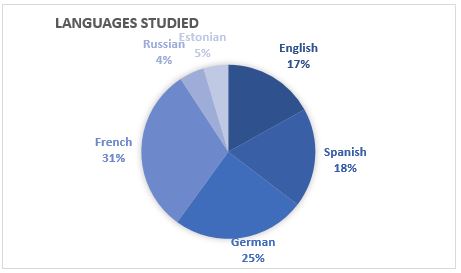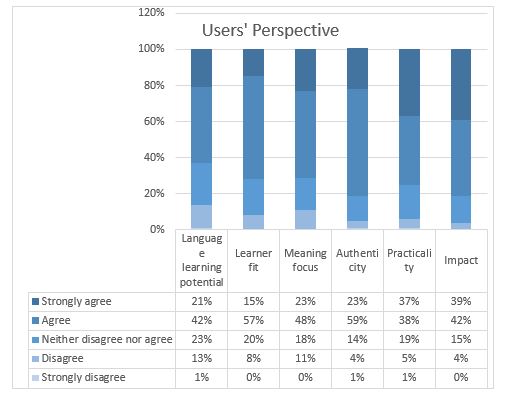My partner and I are from different countries, and one of our bucket list items has always been to learn each other’s mother tongue. That’s the theory, but life is usually much too busy to get started on it, and, honestly, our languages – Estonian and German – aren’t quite the easiest. Recently, a friend introduced us to Lingvist, and we decided to give it a go.

I went through the Essential Estonian course quite quickly and surprised my partner by sending him off mushrooming (“sõida seenele” – one of my favourite Estonian expressions), which made him laugh a lot. He is a competitive person and studied diligently every day. It wasn’t long before he could pick up on my usually private conversations with friends in German or drop a random “Die Situation ist nicht einfach” when things weren’t going as I’d like them to. I could feel that learning with Lingvist motivated us to dive deeper into each other’s mother tongue and culture as well. I started wondering if other users might have the same feeling about Lingvist that we did.
I am currently pursuing a master’s degree in e-education. For this semester, I was assigned the task of evaluating an online learning environment, which turned out to be the perfect opportunity to find out more about Lingvist and what its users think about it.
I focused this evaluation on the user’s perception. There are different aspects of a product that can be evaluated when measuring the effectiveness of learning solutions, but I’ll try to keep the theory bits short.
A few points are essential to understanding my approach and interpreting the results correctly.
According to Kirkpatrick (whose model is the one most commonly used in evaluating training and educational programmes), the following four levels can be looked at:
- reaction;
- learning;
- behaviour;
- and results.
My research focused on the first level – a user’s reaction. In measuring it, I asked the following questions: What do users think about Lingvist? Do they like it? Do they feel their learning is supported by it?
The questionnaire
I developed a questionnaire based on these questions, and, because everything in research needs to be reliable and valid, I drew on an already existing framework. In 2007, researchers aiming to assess the quality of a computer-assisted language learning platform (here is their article) developed a set of 18 questions. In it, they asked learners to rate that platform’s language learning potential and its fit, meaning its focus, authenticity, practicality, and impact. I used these criteria and adapted the questions to fit Lingvist – voilá, the research tool was created!
The study
The survey was posted online and ran in July 2019. Users were asked to take part in the survey through social media. All in all, 38 Lingvist users answered all of the questions – thank you! Here are some statistics on these users:
- the sample consists of 14 female and 24 male users with an average age of 30 years;
- French is the most popular language studied, closely followed by German (who knew!);
- 57.9% of the users have Lingvist Free, while 42.1% use Lingvist Unlimited;
- Half of the respondents have used Lingvist for more than a year, whereas 24% have learned with Lingvist for less than one month.
Results
In order to find out about the overall satisfaction with the language learning environment, the results of the six categories that I have described earlier were looked at. Users could rate the categories according to a five-point Likert scale, ranging from strongly disagree (1) to strongly agree (5).
The means of all the categories draw a very positive picture, with all of them higher than 3. The categories of practicality and impact were rated especially highly, with means over 4.
Over 80% of the respondents agree or strongly agree that Lingvist has a beneficial impact and leads to a positive learning experience. Also, 75% of the respondents rate the practicality of the app positively, in terms of its interface, intuitive use, and the quality of its graphics and audio files. The category for language learning potential shows the lowest results, with a slightly lower mean of 3.69. However, 63% of all respondents agree or strongly agree that Lingvist offers them sufficient language learning potential in terms of opportunity to focus on the form of their target language.
These results told me that – based on its learners’ perspectives – Lingvist meets the requirements of a quality computer/mobile-assisted language learning environment as described in the six categories I mentioned earlier. This probably does not come as a surprise to its users.
I think it’s important to mention that one limitation of my project was that I only looked at users’ perceptions of learning with Lingvist and its quality. I cannot make any general statement about its effectiveness, but in learning theory it is agreed that motivation is key to learning. This makes me pretty sure that these users’ high satisfaction with Lingvist influences them beneficially in learning their target language(s).
My partner and I could definitely see this positive impact. In the future I hope to see a full-featured Estonian course on Lingvist!




